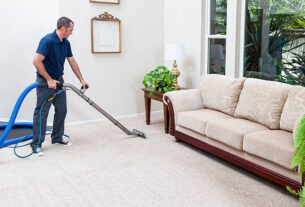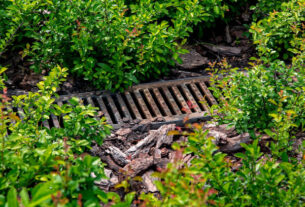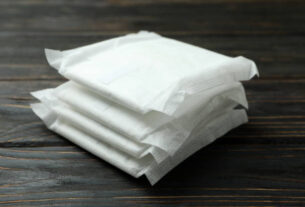When we say carpet cleaning is an art and a science, this is definitely the science part. As you might have guessed, the “best” carpet cleaning solution is highly circumstantial. What kind of stains are we dealing with? How long have those stains been living in your carpet? What is the carpet made of and how was it made? These are just a handful of questions that, depending on the answer, will point to a “best” cleaning solution for the job. Tired of relying on affiliate marketing biased “best” lists? In this article, we will explore different situations and circumstances and walk you through the process of picking the “best” cleaning solution so that you will not only know “what” the “best” cleaning solution is, but “why” it’s the “best.” Remember, if you are totally clueless when it comes to cleaning solutions, you can always reach out to a carpet cleaning company in your area and ask a few questions or schedule a professional cleaning.
Page Contents
What Type Of Carpet Is It?
Before we get into the different types of stains and what works best, we do need to understand what material those stains are sticking to. If you don’t consider the material of the carpet you’re about to clean, you could end up damaging or completely ruining it. Some common types of carpet materials include nylon, polyester, natural fiber and olefin. Each of these respond differently to different cleaning solutions. Let’s take a closer look at the uniqueness of each material and their friendliest cleaning solution counterparts.
Nylon Carpets: Nylon is one of the toughest carpet materials out there. Nylon carpets can handle just about any type of cleaning solution. The only caveat for this sturdy carpet would be to use a pH-balanced cleaner (pH of 7) to avoid deterioration or weakening of the carpet fibers.
Polyester Carpets: While polyester can resist a wide variety of stains, when it comes to oil-based stains, it is no match. For non-oil-based stains, we would typically perform a temperature controlled steam clean (high temperatures can damage polyester carpets). Prior to steam cleaning, we would pretreat a non-oil-based stain with a water-based cleaning solution, e.g., white vinegar is a good household available cleaner for these types of stains. For oil-based stains, we would recommend diluting dish soap in water as it is highly effective at cutting through oil and grease.
Natural Fiber Carpets (e.g. Wool): Wool for example, is a natural fiber that is much more sensitive than its synthetic counterparts. When it comes to cleaning solutions, look for “WoolSafe” certified solutions. What makes a cleaning solution WoolSafe? A good WoolSafe cleaning solution should be pH-neutral (pH of 7), a high pH (alkaline) solution will cause the dyes in your carpet to run and bleed, while a low pH (acidic) solution will physically deteriorate the fibers. Avoid any cleaners with added bleach or dyes, e.g. fluorescent brightening dyes. You should also avoid solutions that leave a sticky residue behind. You can and should always test a small patch of your carpet to see how it reacts to any cleaning solution.
Olefin Carpets: Olefin or polypropylene is particularly hearty material due to its strong resistance to moisture and mildew. Olefin is also resistant to a variety of chemical cleaners, making it one of the easiest carpets to clean without any special equipment. Most water-based cleaning solutions will work just fine for this type of carpet.
Label Literacy – What’s In Your Cleaner?
We’ve all heard of ‘label literacy’ when it comes to food labels, but what about the labels on our cleaning solutions? Believe it or not, you don’t have to have a PhD to understand what’s in your cleaner. Let’s put on our nerd hats and telescopic goggles and dive into the basic building blocks that make up our water-based cleaners.
When it comes to water-based cleaning solutions, there are 9 core ingredients to consider, each one serving a specific purpose in the overall deep cleaning mission. Depending on the type of carpet, you should look for some of these ingredients and watch out for others. Here are some ingredients to look for and to avoid for natural fiber carpets.
Building Blocks Of A Cleaning Solution
- Surfactants: these are the active cleaning agents that reduce surface tension, so that water can spread and penetrate carpet fibers more easily. Nonionic surfactants are natural fiber safe.
- Ingredients to look for: alkyl polyglucosides, nonylphenol ethoxylates, cocamidopropyl betaine
- Ingredients to avoid: sodium lauryl sulfate (SLS), sodium dodecylbenzenesulfonate
- Builders: builders soften water by binding to hard water minerals, which makes for a gentler clean.
- Ingredients to look for: sodium citrate, sodium bicarbonate (baking soda), polyacrylic acids
- Ingredients to avoid: sodium carbonate (soda ash), sodium hydroxide (lye), sodium tripolyphosphate, bleach
- Solvents: solvents work to dissolve substances in the cleaning solution.
- Ingredients to look for: H2O (water), acetic acid, citrus, eucalyptus oil, hydrogen peroxide, mild dish soap
- Ingredients to avoid: bleach, acetone, turpentine and mineral spirits, chlorinated solvents, ammonia, EGBE
- pH Modifiers: pH-modifiers adjust how alkaline or acidic the cleaning solution is. Overly alkaline or overly acidic can damage the dyes and carpet fibers.
- Ingredients to look for: acetic acid (vinegar), citric acid, sodium bisulfate, tartaric acid, lactic acid
- Ingredients to avoid: sodium hydroxide (lye), sodium carbonate (washing soda), ammonia, hydrochloric acid, sulfuric acid
- Enzymes: enzymes are designed to breakdown organic matter, which makes them particularly effective against pet stains and strong odors.
- Ingredients to look for: amylase, lipase, mannanase
- Ingredients to avoid: protease, cellulase
- Chelating Agents: chelating agents improve the overall effectiveness of cleaning solutions. They also prevent mineral deposits from hard water and soap scum and protect color brightness.
- Ingredients to look for: sodium citrate, citric acid, EDTA, GLDA, MGDA
- Ingredients to avoid: sodium carbonate, high concentration EDTA, nitrilotriacetic acid
- Fragrances and Dyes: when it comes to your carpets, while fragrances are generally harmless, we recommend against any dyes that might alter the original carpet colors.
- Ingredients to look for: essential oils
- Ingredients to avoid: synthetic fragrances, phthalates, alcohol-based fragrances
- Preservatives: preservatives are added to cleaning solutions to prevent microbial growth.
- Ingredients to look for: grapefruit seed extract, sodium benzoate, potassium sorbate, sorbic acid, ethanol, vitamin E, rosemary extract
- Ingredients to avoid: formaldehyde, phenol derivatives, parabens, isothiazolinones, triclosan
- Foam Control Agents: foam control agents are used to keep the amount of foam generated during cleaning to a minimum.
- Ingredients to look for: silicone-based defoamers, fatty alcohol-based defoamers, fatty acid-based defoamers, mineral oil-based defoamers, polyglycol-based defoamers
- Ingredients to avoid: highly alkaline or acidic agents, solvent-based defoamers, certain silicone-based defoamers, petroleum-based mineral oils
We fully recognize that was a lot of science we just threw at you, but we hope you can at least keep this article handy the next time you click on one of those “best cleaners” lists. Remember, when it comes to cleaning solutions and your carpets, there is no such thing as an ‘all purpose’ cleaner. A little bit of label literacy can go a long way for your carpets and the overall healthiness of your living or working environment. If you don’t want the hassle of collecting all the “best” carpet cleaning solutions, nor the hassle of cleaning your carpet, go with a professional carpet cleaning company near you that provides eco-friendly cleaning options. Thanks for reading and best of luck on your quest for the best!

Lois Lane is a professional blogger and a seasoned Content writer for wellhousekeeping.com. With a passion for simplifying complex Home Decor topics, he provides valuable insights to a diverse online audience. With four years of experience, Lois has polished his skills as a professional blogger.




